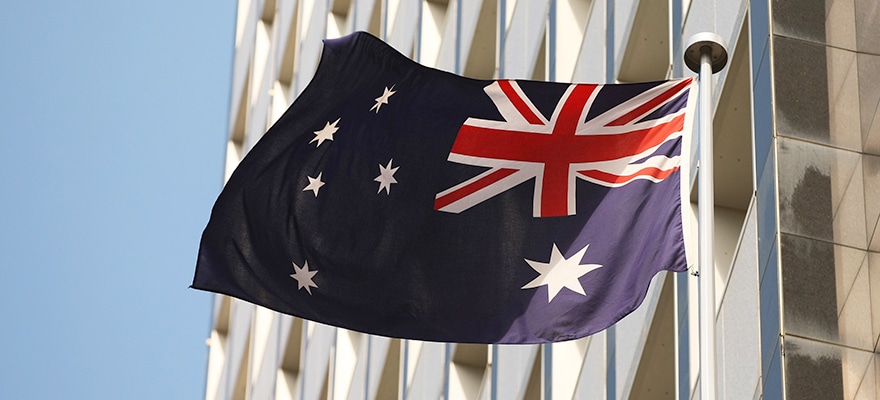Australian non-bank FX providers are proving to be the outliers in the global business spot FX market, which is dominated by the big banks.
The State of the Non-Bank FX Industry
In a recent report, specialist research firm East & Partners said thath Australian non-bank FX providers are giving their big bank rivals good competition in the estimated US$117 billion a day business spot FX market. While on a global scale, non-bank FX providers are failing to make a dent in this lucrative market, the East & Partners report said that it is quite a different picture in Australia.
This is due to the fact that around one in four Australian businesses primarily uses a non-bank FX provider to execute their spot FX transactions. According to Martin Smith, Head of Market Analysis at East & Partners: “Compared to their global peers, Australian importers and exporters are more willing to look beyond their bank for their Spot FX transaction needs.”
Boutique providers are luring in business customers with the promise of lower execution costs and, superior digital platforms
“Although major domestic banks maintain their dominant market position, boutique providers are luring in business customers with the promise of lower execution costs and, superior digital platforms," he added.
And this must be music to the ears of non-bank FX providers, which have been building a solid presence in the Australia and New Zealand markets over the past few years. While the domestic (ANZ) region is dominated by Western Union Business Solutions (WUBS), there’s a number of strong competitors that are aggressively gaining market share.
The most recent industry report showed the leading non-bank FX providers in Australia include:
- Encore FX – most recent entrant in the Australian and New Zealand market, though the management team has been in the industry for several decades
- AFEX – has been around for about 10 years but has been aggressively expanding in recent years
- Western Union Business Solutions – largest provider due to its acquisition of Custom House in 2009 and Travelex in 2011
- American Express – one of the oldest existing players
- OFX – listed non-bank FX provider which was almost acquired by Western Union as well
- HiFX – another recent player in the Australian and NZ market
Business Spot FX a Lucrative $10 billion-a-Day Market
East & Partners also estimated that the Australian business FX industry executes about $10 billion worth of transactions per day. Though most of the transactions are processed through the big banks, the report confirmed market estimates that non-bank FX providers account for about 20 percent market share.
Where is the Growth Coming From?
According to estimates, approximately 20 percent of businesses tends to use non-bank FX providers. Though this may look a pretty small percentage, we could be looking at hundreds of millions of dollars in constant and ongoing revenue from a niche industry.
Fraser Jeffries, Senior Vice President for Global Business Development at Encore FX, was also very positive about the growth prospects for non-bank FX providers. According to Jeffries: “We see the healthy growth in our industry to continue as more businesses prefer to deal with non-bank FX providers like us. Companies and business owners are getting used to dealing with non-bank providers because they get more value and better quality of service from us.”
Another growth factor is the globalisation of industries. According to Jeffries, the past 10-15 years have seen a tremendous growth in the level of globalisation, which totally changed the market landscape. Whereas manufacturing was more local 10- 15 years ago, it is now a global phenomenon that requires cross-border Payments
Payments
One of the bases of mediums of exchange in the modern world, a payment constitutes the transfer of a legal currency or equivalent from one party in exchange for goods or services to another entity. The payments industry has become a fixture of modern commerce, though the players involved and means of exchange have dramatically shifted over time.In particular, a party making a payment is referred to as a payer, with the payee reflecting the individual or entity receiving the payment. Most commonl
One of the bases of mediums of exchange in the modern world, a payment constitutes the transfer of a legal currency or equivalent from one party in exchange for goods or services to another entity. The payments industry has become a fixture of modern commerce, though the players involved and means of exchange have dramatically shifted over time.In particular, a party making a payment is referred to as a payer, with the payee reflecting the individual or entity receiving the payment. Most commonl
Read this Term and transactions.
Additional Avenues of Growth
David Greene, Business Development Director AFEX in Sydney, also shared Jeffries' views on the industry’s growth prospects. He said that the overall economic growth and organic growth from specific sectors are behind the rise and growing demand for non-bank FX providers.
“Essentially, the world has become a smaller place. And the speed of development technological advancement had made tremendous changes in the buying patterns of consumers. And all these are contributing to the need for fast, efficient and transparent movement of money on a global scale,” Greene said.
He also mentioned specific industries that are driving growth in response to consumer and business demands. For example, improvements in the shipping and cargo industry are helping importers and exporters meet the demands from international markets.
And the demand for more agricultural products, which is being driven by the growth in the middle-class population from various regions in the world, is another major factor in the changing dynamics of global commerce and consumer spending. And all these ultimately result in continued growth for global transactions.
Are Corporate Clients Ditching Banks in Favor of Non-Bank FX providers?
While non-bank FX providers agree that not all businesses are ditching the banks for their FX needs, they are looking to non-bank FX providers for something more that they don’t get from the banks.
For example, according to Jeffries from EncoreFX: “While the banks may offer a wider range of products, they tend to lose sight of what businesses really need. Business clients can get lost in the bureaucracy that is so prevalent among the big banks.”
“What we’re finding out and based on our experience, once we get customers we rarely lose them because we service them to the max and deliver them more value than they can get anywhere else,” Jeffries said.
On a similar note, Greene from AFEX explained: “We are more than just an FX information provider. What we do is try to understand where a business or company is at the moment. And once we know their history, their operations and the nature of their business, we can identify opportunities as well as risks that need to be managed.”
Share-of-Wallet is Shrinking
And while non-bank FX providers share the optimism in the growth prospects for the industry, Smith from East & Partners pointed out what could be a worrying trend: the shrinking share-of-wallet.
This is because as more non-bank FX providers enter the market, business and corporate clients now have more options on which provider to transact with. This means that as the big banks work hard to protect their huge market share, the non-bank FX providers are fighting amongst themselves.
Smith said: “What we’ve seen over the past couple of years is that non-bank FX providers are losing their position as primary FX provider. Many businesses tend to go to the banks as primary FX provider and to the non-bank providers for select or specific transactions.”
What Do Non-Bank FX Providers Offer that Banks Don’t?
Aside from the actual money transfer transactions, most non-bank FX providers help business and corporate clients with their hedging and currency Risk Management
Risk Management
One of the most common terms utilized by brokers, risk management refers to the practice of identifying potential risks in advance. Most commonly, this also involves the analysis of risk and the undertaking of precautionary steps to both mitigate and prevent for such risk.Such efforts are essential for brokers and venues in the finance industry, given the potential for fallout in the face of unforeseen events or crises. Given a more tightly regulated environment across nearly every asset class,
One of the most common terms utilized by brokers, risk management refers to the practice of identifying potential risks in advance. Most commonly, this also involves the analysis of risk and the undertaking of precautionary steps to both mitigate and prevent for such risk.Such efforts are essential for brokers and venues in the finance industry, given the potential for fallout in the face of unforeseen events or crises. Given a more tightly regulated environment across nearly every asset class,
Read this Term strategies.
For example, manufacturing companies may need to put hedging strategies in place to lessen the impact of currency fluctuations. Non-bank FX providers are going out of their way to build closer relationships with their business clients in order to win them away from the big banks.
How Are Non-Bank FX Providers Winning Clients Away from Banks?
According to Martin Smith from East & Partners, while banks felt the threat from non-bank FX providers about 3 years ago, the banks seem to have managed to stem the tide. “Banks have been pushing back and have been fighting against the non-bank providers. We have seen this in terms of upgraded platforms and better level of service to corporate and business clients,” said Smith.
But despite the pushback from the big banks, non-bank FX providers seem happy in servicing their niche markets. Most of the players said they have business customers who are happy with the level of service and competitive pricing they're getting from non-bank FX providers.
Who Are Your Target Markets/Sectors?
Non-bank FX providers are focused on servicing niche markets such as importers/exporters, manufactures, service providers like educational institutions and travel/tourism companies.
“Manufacturing is a big focus for us, though we have a wide range of clients in specific niche areas,” Jeffries from EncoreFX said.
Greene from AFEX noted: “While we are industry and sector agnostic, we have good relationships existing clients in the export/import industry, meat and livestock, commodities and agriculture. As much as possible we want to establish ourselves as the provider of choice in these industries.”
In Australia, the growing demand for soft agricultural produce as well as services like education, travel and tourism and film production must be providing growth opportunities for non-bank FX providers as well.
The Role of Technology
Jeffries acknowledges that business and corporate customers are also demanding more online presence and digital capability from their non-bank FX providers.
“Clients definitely want the speed and efficiency of online transactions. However, they also prefer to have that ‘personalised’ service and contact from their FX providers. They don’t want to be treated as just another number.”
While most of the banks push their clients to online-only transactions, non-bank FX providers tend to give their clients the option to do offline transactions, which is another way of winning customers away from the banks.
Greene also agrees that there’s a need to have a fine balance between using new technology to deliver efficiency and still providing ‘personalised’ service to clients.
“What we’re finding is that clients want fast and efficient platforms, but they also want the ability to speak to someone at the other end of the line. They don’t want to be left on their own trying to figure out how to use a sleek platform,” he said.
According to Smith from East & Partners, while technology is shaping up to be a big factor in the growth of non-bank FX providers, some business clients may not be that fussed about it. This is particularly true for those SMEs and other businesses focused on manufacturing and non-high-tech industries.
With many political and economic changes unfolding in 2017, the non-bank FX providers may face a new set of challenges as well as opportunities. But if we’re to go by the outlook and forecast from the major providers, this is an industry with a lot of growth and expansion potential.
In our next article, we will look at the non-bank forex providers servicing the retail sector. This is another growth sector that is attracting many new providers using digital and advanced technology platforms and apps to break into this lucrative market.
This article was written by Eva Diaz, co-founder and Managing Director of Profile Booster.
Australian non-bank FX providers are proving to be the outliers in the global business spot FX market, which is dominated by the big banks.
The State of the Non-Bank FX Industry
In a recent report, specialist research firm East & Partners said thath Australian non-bank FX providers are giving their big bank rivals good competition in the estimated US$117 billion a day business spot FX market. While on a global scale, non-bank FX providers are failing to make a dent in this lucrative market, the East & Partners report said that it is quite a different picture in Australia.
This is due to the fact that around one in four Australian businesses primarily uses a non-bank FX provider to execute their spot FX transactions. According to Martin Smith, Head of Market Analysis at East & Partners: “Compared to their global peers, Australian importers and exporters are more willing to look beyond their bank for their Spot FX transaction needs.”
Boutique providers are luring in business customers with the promise of lower execution costs and, superior digital platforms
“Although major domestic banks maintain their dominant market position, boutique providers are luring in business customers with the promise of lower execution costs and, superior digital platforms," he added.
And this must be music to the ears of non-bank FX providers, which have been building a solid presence in the Australia and New Zealand markets over the past few years. While the domestic (ANZ) region is dominated by Western Union Business Solutions (WUBS), there’s a number of strong competitors that are aggressively gaining market share.
The most recent industry report showed the leading non-bank FX providers in Australia include:
- Encore FX – most recent entrant in the Australian and New Zealand market, though the management team has been in the industry for several decades
- AFEX – has been around for about 10 years but has been aggressively expanding in recent years
- Western Union Business Solutions – largest provider due to its acquisition of Custom House in 2009 and Travelex in 2011
- American Express – one of the oldest existing players
- OFX – listed non-bank FX provider which was almost acquired by Western Union as well
- HiFX – another recent player in the Australian and NZ market
Business Spot FX a Lucrative $10 billion-a-Day Market
East & Partners also estimated that the Australian business FX industry executes about $10 billion worth of transactions per day. Though most of the transactions are processed through the big banks, the report confirmed market estimates that non-bank FX providers account for about 20 percent market share.
Where is the Growth Coming From?
According to estimates, approximately 20 percent of businesses tends to use non-bank FX providers. Though this may look a pretty small percentage, we could be looking at hundreds of millions of dollars in constant and ongoing revenue from a niche industry.
Fraser Jeffries, Senior Vice President for Global Business Development at Encore FX, was also very positive about the growth prospects for non-bank FX providers. According to Jeffries: “We see the healthy growth in our industry to continue as more businesses prefer to deal with non-bank FX providers like us. Companies and business owners are getting used to dealing with non-bank providers because they get more value and better quality of service from us.”
Another growth factor is the globalisation of industries. According to Jeffries, the past 10-15 years have seen a tremendous growth in the level of globalisation, which totally changed the market landscape. Whereas manufacturing was more local 10- 15 years ago, it is now a global phenomenon that requires cross-border Payments
Payments
One of the bases of mediums of exchange in the modern world, a payment constitutes the transfer of a legal currency or equivalent from one party in exchange for goods or services to another entity. The payments industry has become a fixture of modern commerce, though the players involved and means of exchange have dramatically shifted over time.In particular, a party making a payment is referred to as a payer, with the payee reflecting the individual or entity receiving the payment. Most commonl
One of the bases of mediums of exchange in the modern world, a payment constitutes the transfer of a legal currency or equivalent from one party in exchange for goods or services to another entity. The payments industry has become a fixture of modern commerce, though the players involved and means of exchange have dramatically shifted over time.In particular, a party making a payment is referred to as a payer, with the payee reflecting the individual or entity receiving the payment. Most commonl
Read this Term and transactions.
Additional Avenues of Growth
David Greene, Business Development Director AFEX in Sydney, also shared Jeffries' views on the industry’s growth prospects. He said that the overall economic growth and organic growth from specific sectors are behind the rise and growing demand for non-bank FX providers.
“Essentially, the world has become a smaller place. And the speed of development technological advancement had made tremendous changes in the buying patterns of consumers. And all these are contributing to the need for fast, efficient and transparent movement of money on a global scale,” Greene said.
He also mentioned specific industries that are driving growth in response to consumer and business demands. For example, improvements in the shipping and cargo industry are helping importers and exporters meet the demands from international markets.
And the demand for more agricultural products, which is being driven by the growth in the middle-class population from various regions in the world, is another major factor in the changing dynamics of global commerce and consumer spending. And all these ultimately result in continued growth for global transactions.
Are Corporate Clients Ditching Banks in Favor of Non-Bank FX providers?
While non-bank FX providers agree that not all businesses are ditching the banks for their FX needs, they are looking to non-bank FX providers for something more that they don’t get from the banks.
For example, according to Jeffries from EncoreFX: “While the banks may offer a wider range of products, they tend to lose sight of what businesses really need. Business clients can get lost in the bureaucracy that is so prevalent among the big banks.”
“What we’re finding out and based on our experience, once we get customers we rarely lose them because we service them to the max and deliver them more value than they can get anywhere else,” Jeffries said.
On a similar note, Greene from AFEX explained: “We are more than just an FX information provider. What we do is try to understand where a business or company is at the moment. And once we know their history, their operations and the nature of their business, we can identify opportunities as well as risks that need to be managed.”
Share-of-Wallet is Shrinking
And while non-bank FX providers share the optimism in the growth prospects for the industry, Smith from East & Partners pointed out what could be a worrying trend: the shrinking share-of-wallet.
This is because as more non-bank FX providers enter the market, business and corporate clients now have more options on which provider to transact with. This means that as the big banks work hard to protect their huge market share, the non-bank FX providers are fighting amongst themselves.
Smith said: “What we’ve seen over the past couple of years is that non-bank FX providers are losing their position as primary FX provider. Many businesses tend to go to the banks as primary FX provider and to the non-bank providers for select or specific transactions.”
What Do Non-Bank FX Providers Offer that Banks Don’t?
Aside from the actual money transfer transactions, most non-bank FX providers help business and corporate clients with their hedging and currency Risk Management
Risk Management
One of the most common terms utilized by brokers, risk management refers to the practice of identifying potential risks in advance. Most commonly, this also involves the analysis of risk and the undertaking of precautionary steps to both mitigate and prevent for such risk.Such efforts are essential for brokers and venues in the finance industry, given the potential for fallout in the face of unforeseen events or crises. Given a more tightly regulated environment across nearly every asset class,
One of the most common terms utilized by brokers, risk management refers to the practice of identifying potential risks in advance. Most commonly, this also involves the analysis of risk and the undertaking of precautionary steps to both mitigate and prevent for such risk.Such efforts are essential for brokers and venues in the finance industry, given the potential for fallout in the face of unforeseen events or crises. Given a more tightly regulated environment across nearly every asset class,
Read this Term strategies.
For example, manufacturing companies may need to put hedging strategies in place to lessen the impact of currency fluctuations. Non-bank FX providers are going out of their way to build closer relationships with their business clients in order to win them away from the big banks.
How Are Non-Bank FX Providers Winning Clients Away from Banks?
According to Martin Smith from East & Partners, while banks felt the threat from non-bank FX providers about 3 years ago, the banks seem to have managed to stem the tide. “Banks have been pushing back and have been fighting against the non-bank providers. We have seen this in terms of upgraded platforms and better level of service to corporate and business clients,” said Smith.
But despite the pushback from the big banks, non-bank FX providers seem happy in servicing their niche markets. Most of the players said they have business customers who are happy with the level of service and competitive pricing they're getting from non-bank FX providers.
Who Are Your Target Markets/Sectors?
Non-bank FX providers are focused on servicing niche markets such as importers/exporters, manufactures, service providers like educational institutions and travel/tourism companies.
“Manufacturing is a big focus for us, though we have a wide range of clients in specific niche areas,” Jeffries from EncoreFX said.
Greene from AFEX noted: “While we are industry and sector agnostic, we have good relationships existing clients in the export/import industry, meat and livestock, commodities and agriculture. As much as possible we want to establish ourselves as the provider of choice in these industries.”
In Australia, the growing demand for soft agricultural produce as well as services like education, travel and tourism and film production must be providing growth opportunities for non-bank FX providers as well.
The Role of Technology
Jeffries acknowledges that business and corporate customers are also demanding more online presence and digital capability from their non-bank FX providers.
“Clients definitely want the speed and efficiency of online transactions. However, they also prefer to have that ‘personalised’ service and contact from their FX providers. They don’t want to be treated as just another number.”
While most of the banks push their clients to online-only transactions, non-bank FX providers tend to give their clients the option to do offline transactions, which is another way of winning customers away from the banks.
Greene also agrees that there’s a need to have a fine balance between using new technology to deliver efficiency and still providing ‘personalised’ service to clients.
“What we’re finding is that clients want fast and efficient platforms, but they also want the ability to speak to someone at the other end of the line. They don’t want to be left on their own trying to figure out how to use a sleek platform,” he said.
According to Smith from East & Partners, while technology is shaping up to be a big factor in the growth of non-bank FX providers, some business clients may not be that fussed about it. This is particularly true for those SMEs and other businesses focused on manufacturing and non-high-tech industries.
With many political and economic changes unfolding in 2017, the non-bank FX providers may face a new set of challenges as well as opportunities. But if we’re to go by the outlook and forecast from the major providers, this is an industry with a lot of growth and expansion potential.
In our next article, we will look at the non-bank forex providers servicing the retail sector. This is another growth sector that is attracting many new providers using digital and advanced technology platforms and apps to break into this lucrative market.
This article was written by Eva Diaz, co-founder and Managing Director of Profile Booster.





















